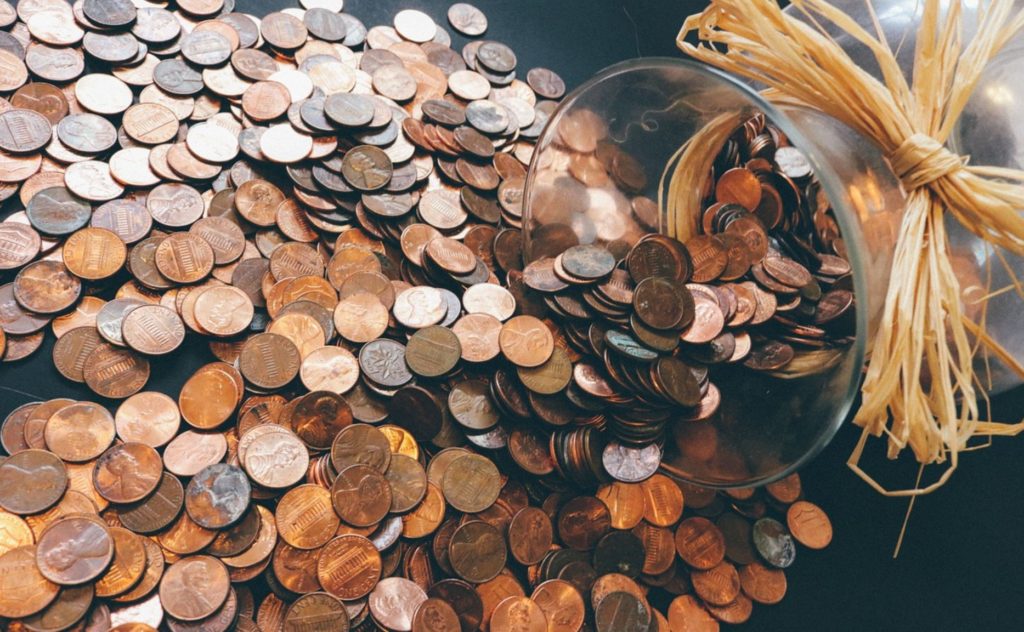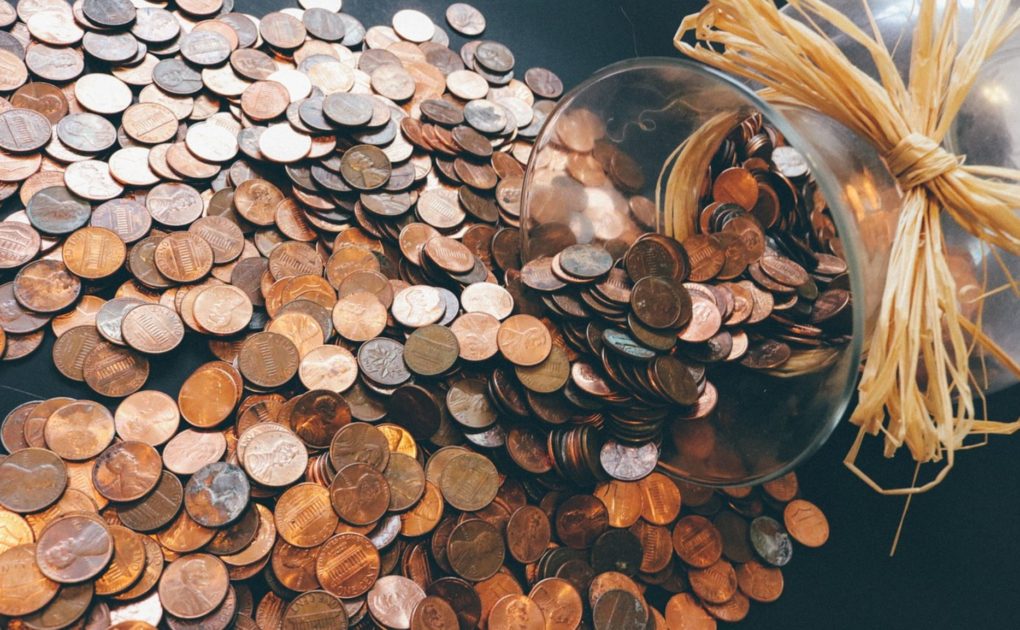8 Strategies for Prepping When You Have NO Extra Money
 By Daisy Luther
By Daisy Luther
Given the economic circumstances in the United States, it’s unsurprising that a lot of people who would otherwise be prepping have found themselves at a standstill due to financial reasons.
Whether it’s because of a job loss, higher food prices, or simply no room in the budget, you can still prep. Here are some strategies to help you get ready for the next few months.
Make a menu
Before you ever set foot in the store, it’s a great idea to make a menu so that you know what you need. One of the easiest ways to prep is by “meal” instead of by separate ingredients. If you set up a meal plan that includes some extremely inexpensive options for lunches and dinners, you can help your limited funds go further. You may not be able to eat your normal healthy fare if times are tough. Just make the best choices you can while still staying fed, okay?
Widget not in any sidebars
Some ideas for inexpensive “filler” meals are:
- Oatmeal
- Peanut butter and crackers
- Beans and rice
- Canned soup
- Canned pasta
- Ramen noodles
- Eggs and toast
- Fried rice
- Cereal
- PB&J sandwiches
- Tuna salad with crackers
- Pasta and canned sauce
I know – not very glamorous – but these things can be acquired in quantity cheaply, and they’ll feed you for about a buck a meal.
If possible, plan for one hearty and more filling meal each day. Use canned fruits and veggies as well as dry goods like rice, barley, and pasta to make that meal well balanced. These articles may provide some shopping inspiration.
- Here are some ideas for feeding your family for a month on a tight budget.
- This article has a one-month menu made mostly from shelf-stable foods, as well as some recipes.
Shop “doubles.”
Now that you have a menu, replace your normal fresh meat, dairy, fruits, and veggies with some of the less-expensive ingredients. Focus on getting as much bang for your grocery buck as possible. Use your normal grocery budget and buy as many inexpensive items as possible.
While you’re at the store, shop “doubles. Buy at least two of each item. Keep one in the kitchen pantry and put one back for later.
Get Non-GMO storable food HERE!
Add as many simple, inexpensive ingredients as possible to your stockpile.
- Dried beans
- Rice
- Potato flakes
- Pasta
- Cans of sauce
- Vegetable juice (makes a delicious and nutritious soup base)
Usually, I recommend quality ingredients but right now, people are feeling a strong sense of urgency to get prepared and I suggest you focus on quantity. Hopefully, things won’t be that bad and you can add more high-quality nutrients to your stash as time goes on. But for now – fill up that stockpile!
Fill containers with water
If you haven’t taken out the recycling yet this week, don’t! You can use those empty two-liter soda pop bottles and gallon water bottles to stock up on a drinking water supply. Count on a gallon a day per human and pet. (Two 2-liter bottles are approximately a gallon.)
But don’t stop there. If you have other containers that shouldn’t be used for drinking water, you can fill them with water for other uses, like sanitation, flushing the toilet, and keeping clean.
Add to your supply each week, and soon you’ll have a month supply, quietly sitting there in your basement. Here’s an infographic to get you started on safely storing water. If you want to be more serious about your water supply, I have a book about it that you can get on Amazon.
Organize your supplies.
You probably have a lot more stuff on hand than you realize. Now is the time to go through your home and organize what you have. Gather up all your food, medicine, first aid supplies, and personal hygiene supplies, and do a quick inventory. You may be in a better position than you realized.
Put all your first aid, over-the-counter medications, prescription meds, and medical supplies together so you can see what you have. Think about how you can improvise anything you’re missing.
I keep my supplies in kits. I have a power outage kit with candles, lighters, flashlights, batteries, solar chargers, etc. I have a pandemic kit I created back in 2014 during the Ebola scare with masks, gloves, Tyvek suits, booties, and other things specific to a pandemic. I use big Rubbermaid tubs for these kits but you can use anything: cardboard boxes, even space on a shelf.
If you bought a whole lot of stuff in a frenzy – and let’s be honest, a lot of us did – you may have them stacked in a precarious pile in some area of the house. Take the time to organize your food. You can go about this in different ways – put ingredients for meals together, put all the veggies in one area, all the grains in another area…however you decide to go about it, getting organized will help you see what you have on hand.
Get serious about home and family security.
As I wrote in my article about what I’m telling my family members, I expect crime to be on the uptick in the very near future. It’s time to get serious about security for your home and family.
Go outside and take a walk around your house. Are there things that need to be addressed to make your home more secure? Do you need to trim back some shrubs to keep the area under windows visible? Should you secure downstairs windows so they can’t easily be raised up from the outside? Can you put a locking latch on the gate in the back yard? Does your shed need a lock on it? Focus on the small tasks you may have been putting off to make your home more secure. This article has some tips using things you may already have lying around.
And don’t stop with your property – continue on to the people you love, too. Would your family members know what to do in the event of a home invasion? If not, you need to make a plan. Vulnerable family members need to get out of the way, and family members who are engaging the criminals need to know who is doing what so they don’t get in each other’s way. Place weapons and potential weapons in strategic areas around the home.
Put together important information
Organize your essential papers and documents into a folder so that you can grab it quickly if you ever have to bug out. Include things like medical records, veterinary records, deeds, mortgage papers, insurance policies, social security numbers, and identification.
Don’t stop at just putting it in a folder. You should also scan these documents and save them in the cloud. Here is a preparedness based article on the topic and another article on whether or not this is a safe action.
Learn stuff.
Make the most of your time by learning new skills and acquiring knowledge.
Learn to make things, repair things, grow things, and take some time to look into old-fashioned solutions. This is a great time to pick up some new skills. Read some of those books in your to-read pile and check out how-to videos on YouTube.
The internet is a wonderful place, and best of all, this knowledge can be found for FREE! The more you know about crisis situations, the more ready you will be to face them. Some sites are friendlier to beginners than others, so if you stumble upon a forum where people seem less than enthusiastic about helping people who are just starting out, don’t let it get you down. Move on and find a site that makes you feel comfortable. Following are some of my favorites, and the link will take you to a good starting point on these sites. In no particular order:
- The Organic Prepper (obviously – and subscribe here for the daily newsletter)
- Ready Nutrition
- Graywolf Survival
- SamanthaBiggers.com
- Mind4Survival.com
- Backwoods Resistance
- Survival Weekly
- A Year Without The Grocery Store
- Survival Blog
The more you learn, the better off you’ll be. Play through situations in your mind, read about them, and if these things actually arise, you’ll be able to act more quickly than the average person. This stuff costs nothing but your time.
Check your budget.
Take a long, hard look at your budget. Are there things you can cut right now to help you get better prepared for a long-term financial crisis? Slash unnecessary expenditures now. Call your insurance company for a better rate. Cancel subscription boxes. Put all of that money toward preps.
Of course, we’d all love to be able to grab a 5-year supply of freeze-dried foods, load up on guns and ammo, and move to our fully-stocked bug-out retreats in our Hummers, but for most folks, that isn’t at all feasible. What IS feasible is focusing on the things we CAN do. (If you have a little bit of money to spend, check out this article on $1 preps.)
There’s a lot more to prepping than simply buying stuff and piling it into a closet. The time you spend now on non-purchase prepping is also very important. It’s a whole lot easier to think things through right now when you are calm and well-fed than it is to try and figure them out when you’re under stress. This isn’t the time to sit around streaming Netflix or doing a crossword puzzle. There’s a lot of work to be done before we reach the point that we can’t do anything more.
The most important ways to prep are to keep learning, keep organizing, and be alert. If you do those three things, even without spending a lot of money on supplies, you’ll be far, far ahead of the unprepared masses.
So close that Amazon window on your computer and get to work.
Source: The Organic Prepper
Daisy Luther is a coffee-swigging, gun-toting blogger who writes about current events, preparedness, frugality, voluntaryism, and the pursuit of liberty on her website, The Organic Prepper. She is widely republished across alternative media and she curates all the most important news links on her aggregate site, PreppersDailyNews.com. Daisy is the best-selling author of 4 books and lives in the mountains of Virginia with her two daughters and an ever-growing menagerie. You can find her on Facebook, Pinterest, and Twitter.
FREE PDF: 10 Best Books To Survive Food Shortages & Famines



